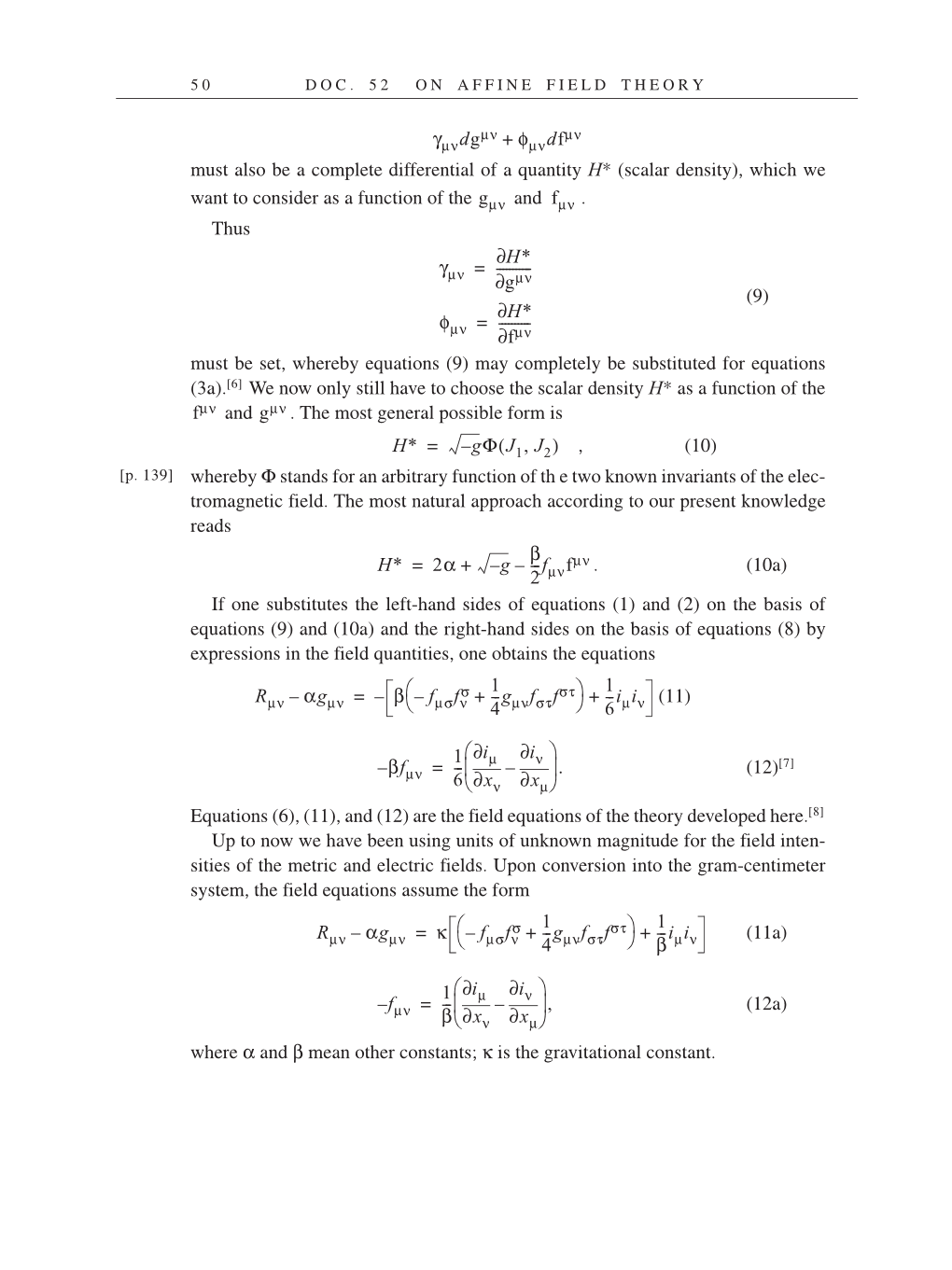5 0 D O C . 5 2 O N A F F I N E F I E L D T H E O R Y
must also be a complete differential of a quantity H* (scalar density), which we
want to consider as a function of the and .
Thus
(9)
must be set, whereby equations (9) may completely be substituted for equations
(3a).[6]
We now only still have to choose the scalar density H* as a function of the
and . The most general possible form is
, (10)
whereby Φ stands for an arbitrary function of th e two known invariants of the elec-
tromagnetic field. The most natural approach according to our present knowledge
reads
. (10a)
If one substitutes the left-hand sides of equations (1) and (2) on the basis of
equations (9) and (10a) and the right-hand sides on the basis of equations (8) by
expressions in the field quantities, one obtains the equations
(11)
(12)[7]
Equations (6), (11), and (12) are the field equations of the theory developed here.[8]
Up to now we have been using units of unknown magnitude for the field inten-
sities of the metric and electric fields. Upon conversion into the gram-centimeter
system, the field equations assume the form
(11a)
(12a)
where α and β mean other constants; κ is the gravitational constant.
γμνdgμν φμνdfμν
+
gμν fμν
γμν
∂H*
∂gμν
---------- -=
φμν
∂H*
∂fμν
---------- =
fμν gμν
H* –gΦ(J1, J2) =
[p. 139]
H* 2α –g
β
2
--fμνfμν - –+=
Rμν αgμν – β© fμσfν
σ
–
1
4
--gμνfστfστ¹ -
+
§ ·
1
6
--iμiν -
+ –=
–βfμν
1§
6©
--¨ -
∂xν
∂iμ
∂xμ¹
∂iν
–
¸
·
. =
Rμν αgμν – κ fμσfν
σ
–
1
4
--gμνfστfστ¹
- +
©
§ ·
1
β
--iμiν - + =
–fμν
1
β©
-- -
∂xν
∂iμ
∂xμ¹
∂iν
–
¨ ¸
§ ·
, =
